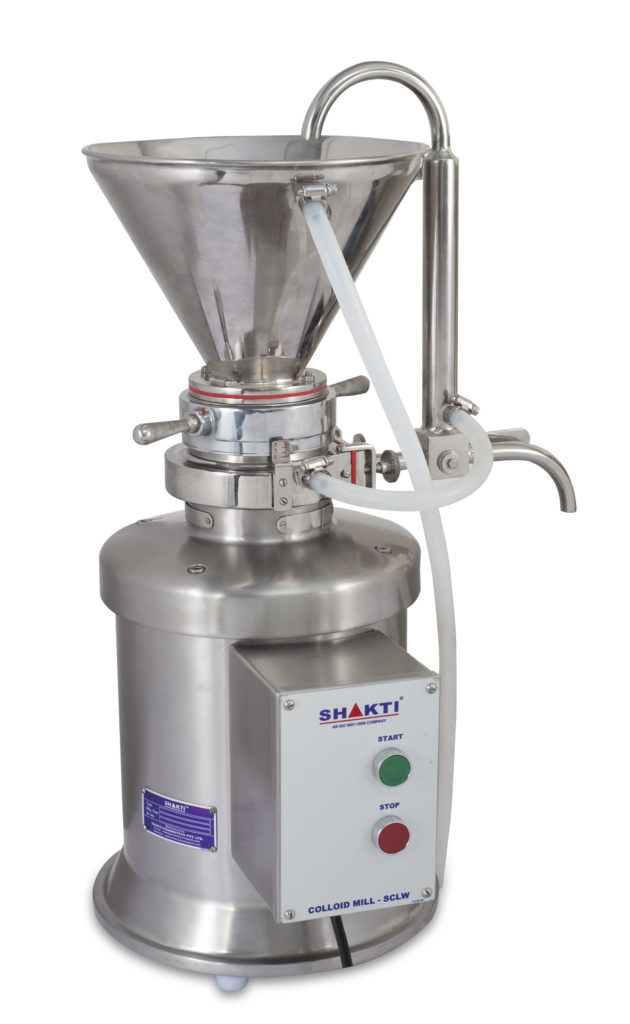 +91 98253 18370
Products
+91 98253 18370
Products
Colloid Mill – Water Jacketed is an ideal and perfect homogenizer-cum-emulsifier. It finds its application in various processes like grinding, homogenizing, emulsifying, dispersing, mixing, extracting etc., catering to the needs of several industries, such as
1. Pharmaceutical Industry.
2. Pharmaceutical Institution & Research enter.
3. Food, Dairy, Sweetmeats and confectionery Industry.
4. Chemical Industry, Rubber Industry
5. Paint Industry, Textile Industry.
6. Cosmetic and Detergent Industry
7. Rubber Industry
8. Sausage Production and meat packing Industry
9. Starch Industry , Paper Industry
Outstanding and rigid design criteria combined with excellent quality of workmanship of SHAKTI colloid mill automatically ensures superior end product. It is suitable for small, medium, as well as large batches of production.
| TYPES | DETAILS |
|---|---|
| Model | SCMG-M |
| Hopper Capacity | 3 Ltr. |
| Output | 10 to 150 Liters/hr. Micron - 5 to 10 |
| Motor | 1 H.P., 2850 R.P.M., 440 Volts, 50 Cycles, 3 Phase, AC |
| Teeth of Rotor & Lower Stator for better Result. | 70 nos. |
| Dimensions | 950 x 350 x 710 mm. |
| Floor Space | 400 mm x 510 mm |
| Net Weight | 44 kg |
| Gross Weight | 72 kg. Approx. |
| Case Dimensions | 1050 x 830 x 800 mm [L x B x H] |
SHAKTI Colloid Mill is driven by a special vertical type-high speed motor, which along with stainless steel housing provides working area of the mill. Circular ring shaped stator assembly having two different tooth stages, and the conical rotor which is directly coupled with the motor shaft, are housed in the housing. The perfectly matched conical shape of the rotor and stator permits to axially adjust the grinding gap to an accuracy of 0.10 mm. The opening or closing of this gap is calibrated on a scale. One rotation of the adjusting ring corresponds to a grinding gap 0.5mm.
SHAKTI Colloid Mill the product is subjected to high shearing, cutting, and rubbing forces between two toothed surfaces. The product, while passing down the hopper, initially gets seized in the preliminary breaking drum where it is broken and thrown in to the centrifugal effect of the rotor rotating at a speed of 2800 RPM, the material is forced in to second tooth stage.
The tooth design of the grinding set causes powerful vibrations, which subject the particles with high degree of forces. Intense whirling multiplies the grinding and mixing effect. The process is continued till the material reaches the lowest grinding stage. The ground material continuously leaves the mill through the outlet pipe, if required, it can be recirculated.
